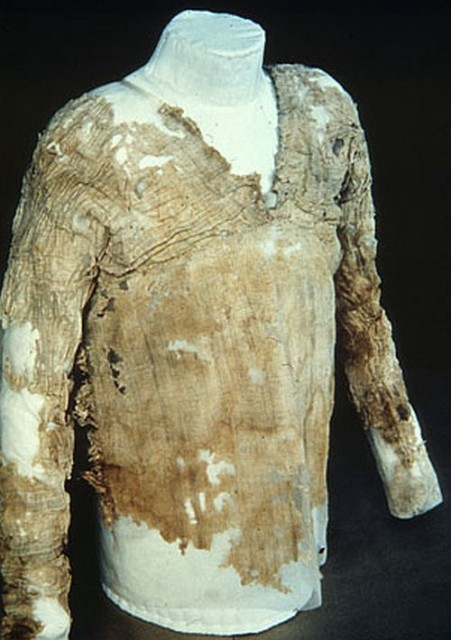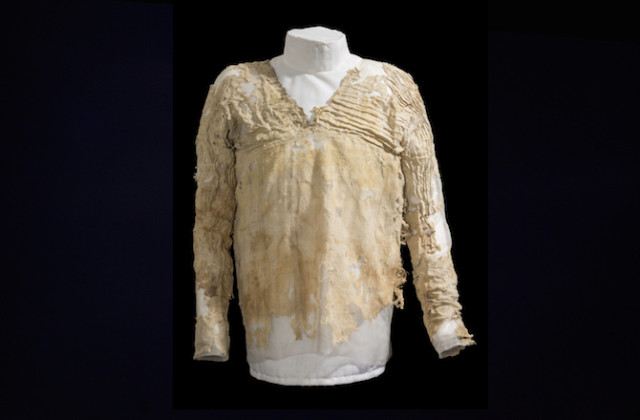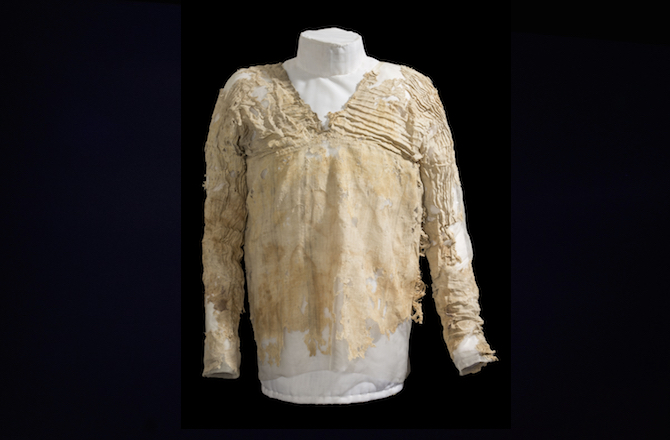The earliest bar and restaurant, as well as the first known dress, were recently discovered in France. The Antiquity Journal reported these discoveries which provide insight into what early life was like thousands of years ago in both ancient Egypt and southern France.
The article of clothing dating back to around 3482 B.C. is known as the Tarkhan Dress. Not surprisingly, the garment looks like a quite-tattered and stained shirt. But this linen dress was a big deal back in the day, and when new it would have been very fashionable even as it might be today. Researchers have been able to determine that the dress did have a natural pale grey stripe with knife-pleated sleeves and bodice. They were unable to decipher the original length of the dress since the hem is missing.

Alice Stevenson is the curator of the University College London (UCL) Petrie Museum of Egyptian Archaeology. She released a statement to the press saying, “The survival of highly perishable textiles in the archaeological record is exceptional; the survival of complete, or almost complete, articles of clothing like the Tarkhan Dress is even more remarkable.”
Stevenson added that it was suspected that the dress originated from the First Dynasty. Researchers have not been able to confirm this since the sample previously needed for testing would have imparted too much damage on the historic dress. The age of the dress has now been confirmed, which makes it Egypt’s oldest garment. It is also the oldest known garment in the world that was woven. In order to calculate the age of the garment, Michael Dee and his colleagues from the University of Oxford measured a small sample of the dress. This is how one determines how much radiocarbon (a radioactive isotope of carbon) remained in the linen. Linen is known for being suitable for the radiocarbon dating process; researchers explained that it is due to the flax fibers that grow over a pretty short time.
If you visit the UCL Petrie Museum of Egyptian Archaeology, the dress can be seen on display. It certainly shows the wear and tear that originates from the early days. The thought is that a young and very thin woman once wore it.
The same journal reported a separate study that highlighted the discovery of a tavern in southern France. The leftover remains of the structure are 2,141 years old. It resides at a site called Lattara. Co-authors Benjamin Luley of Gettysburg College and Gaël Piquès of Montpellier University reported on the finding. They said, “Not only is the tavern the earliest of its kind in the region, it also serves as an invaluable indicator of the changing social and economic infrastructure of the settlement and its inhabitants following the Roman conquest of Mediterranean Gaul in the late second century B.C.”
Originally the researchers just thought they had uncovered an old bakery. They were able to determine that the site had featured three huge ovens and indoor gristmills at some point. However, they later found another nearby room that was located across from the courtyard. It had benches lining its walls.

They also found fish bones, sheep, and cattle; big platters and bowls were also unearthed at the site. It is likely that the meat was cooked BBQ-style over a charcoal burning hearth since that was also found at the site. Ceramic drinking vessels were the most common find. The tavern dates back to the Roman period in France. Therefore, researchers think it is a very well-equipped Roman style tavern that likely offered a vast menu. Roadhouses along popular travel routes were quite common in those days.
In that region, wine was the most popular drink of choice, but that remains true even today. It is clear that a lot of it was served while the tavern was open for business. This would have made for a popular spot to visit in a nice scenic area circa 125 B.C.
